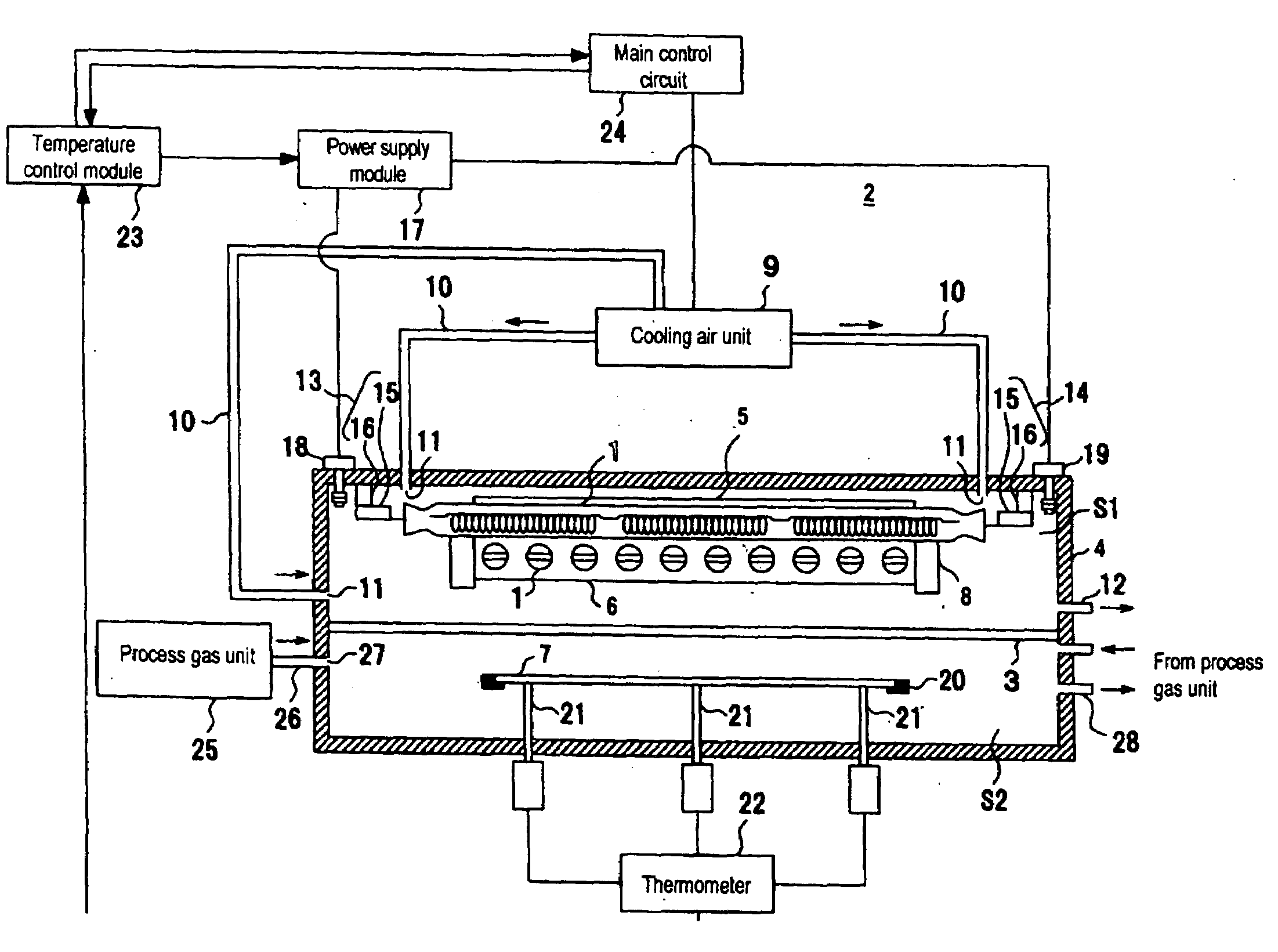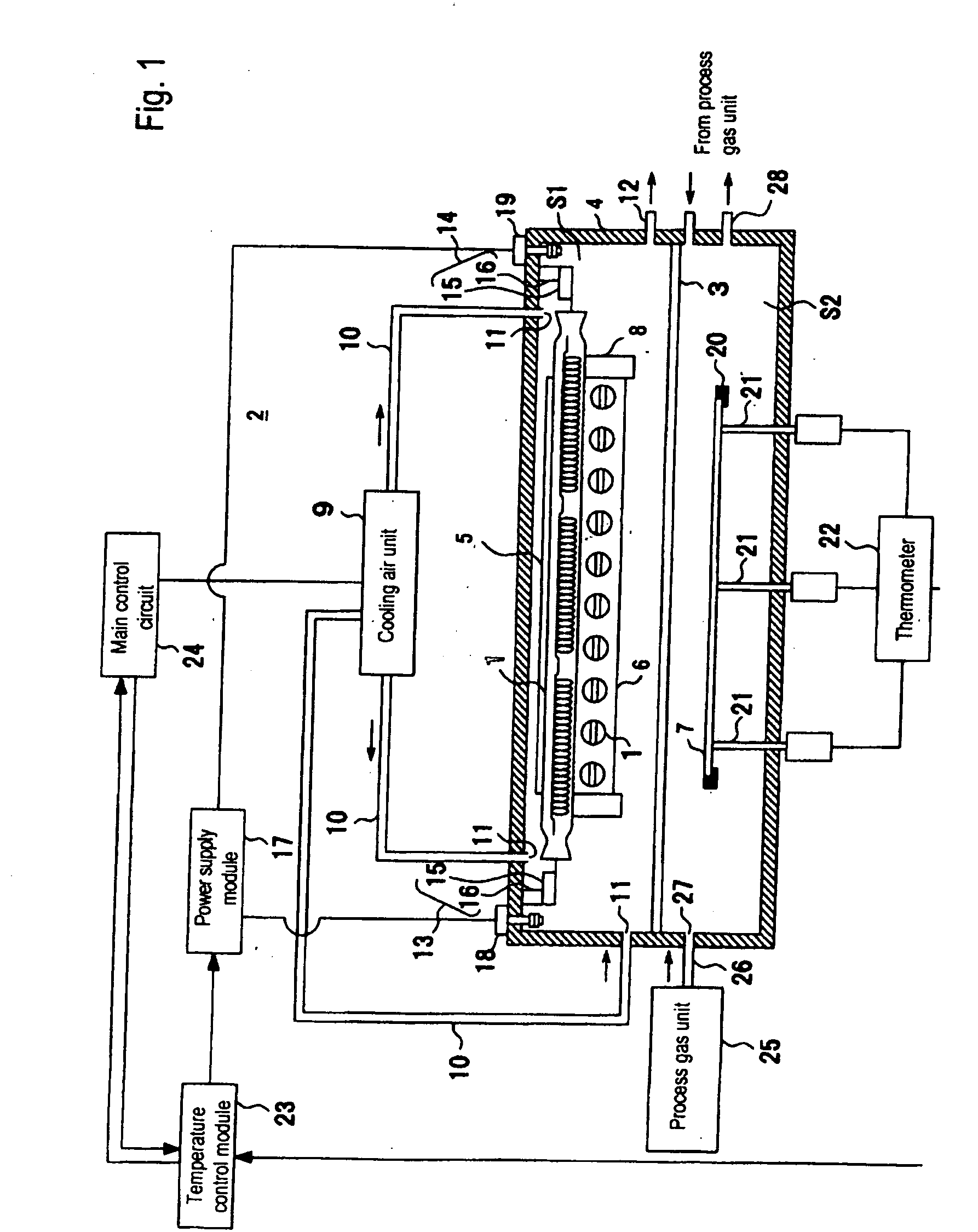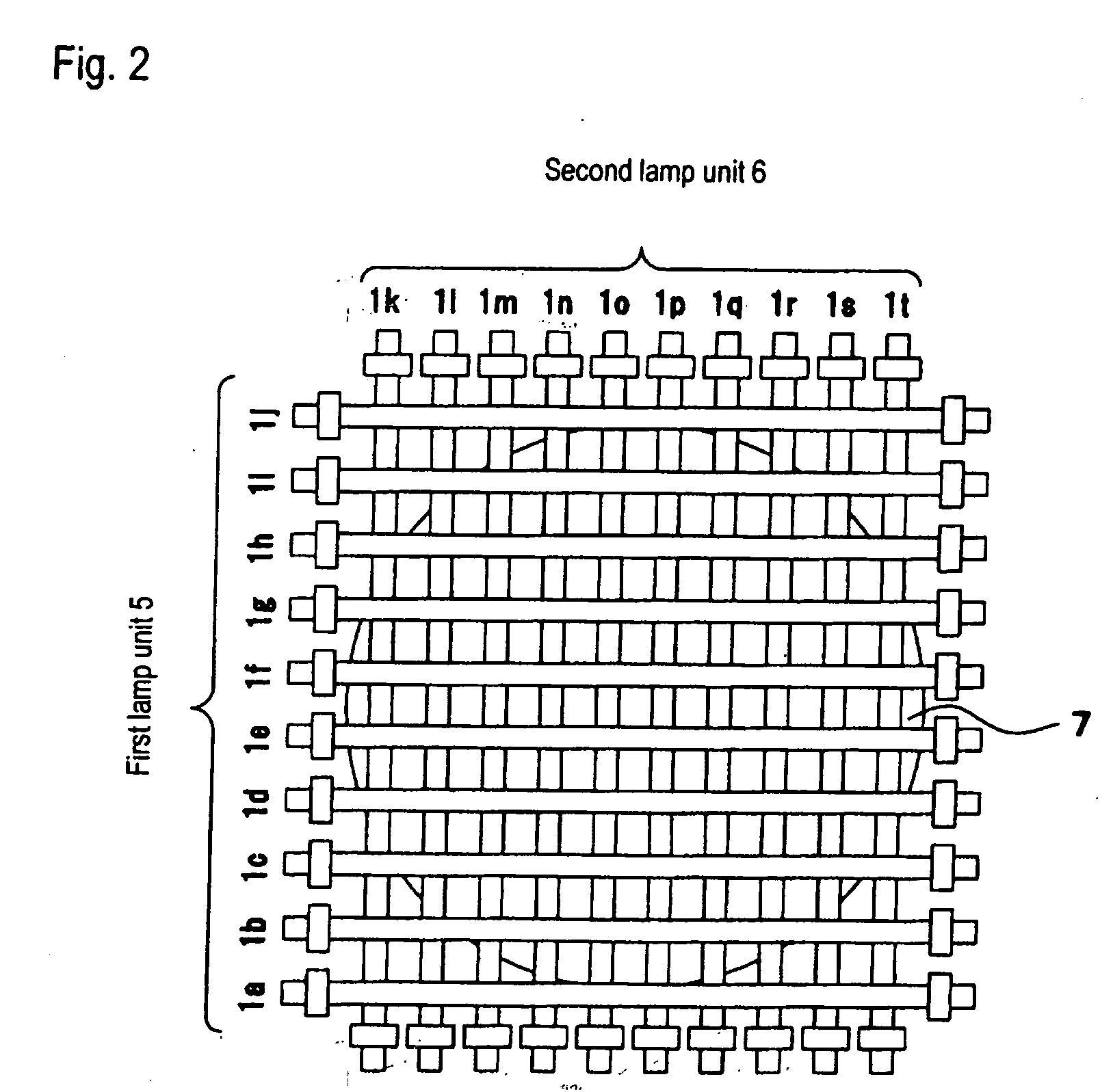Filament lamp and heat treatment device of the light irradiation type
a heat treatment device and light irradiation technology, applied in lighting and heating apparatus, drying, furnaces, etc., can solve the problems of defective items, defects in crystal transition, and slipping of semiconductor wafers, so as to increase the electrical resistance of filaments, increase the surface area of filaments, and increase the length of bare wires
- Summary
- Abstract
- Description
- Claims
- Application Information
AI Technical Summary
Benefits of technology
Problems solved by technology
Method used
Image
Examples
Embodiment Construction
[0046]An embodiment of the present invention will now be explained using FIGS. 1 through 10.
[0047]FIG. 1 is a cross-section diagram of a heat treatment device of the light irradiation type according to an embodiment of the invention, configured with multiple filament lamps that have independent power supplies and are arranged in parallel. FIG. 2 is a diagram of the article to be treated looking at it from above the heat treatment device of the light irradiation type shown in FIG. 1, through the multiple filament lamps arranged in parallel.
[0048]As shown in FIG. 1, this heat treatment device of the light irradiation type 2 has a chamber that is divided into a lamp unit housing space S1 and a heat-treatment space S2 using a transparent quartz window 2, a quartz glass window for example. The light emitted from the first lamp unit 5 and the second lamp unit 6 that are arranged in the lamp unit housing space S1 passes through the quartz window 3 and performs the heat treatment of the art...
PUM
 Login to View More
Login to View More Abstract
Description
Claims
Application Information
 Login to View More
Login to View More - R&D
- Intellectual Property
- Life Sciences
- Materials
- Tech Scout
- Unparalleled Data Quality
- Higher Quality Content
- 60% Fewer Hallucinations
Browse by: Latest US Patents, China's latest patents, Technical Efficacy Thesaurus, Application Domain, Technology Topic, Popular Technical Reports.
© 2025 PatSnap. All rights reserved.Legal|Privacy policy|Modern Slavery Act Transparency Statement|Sitemap|About US| Contact US: help@patsnap.com



